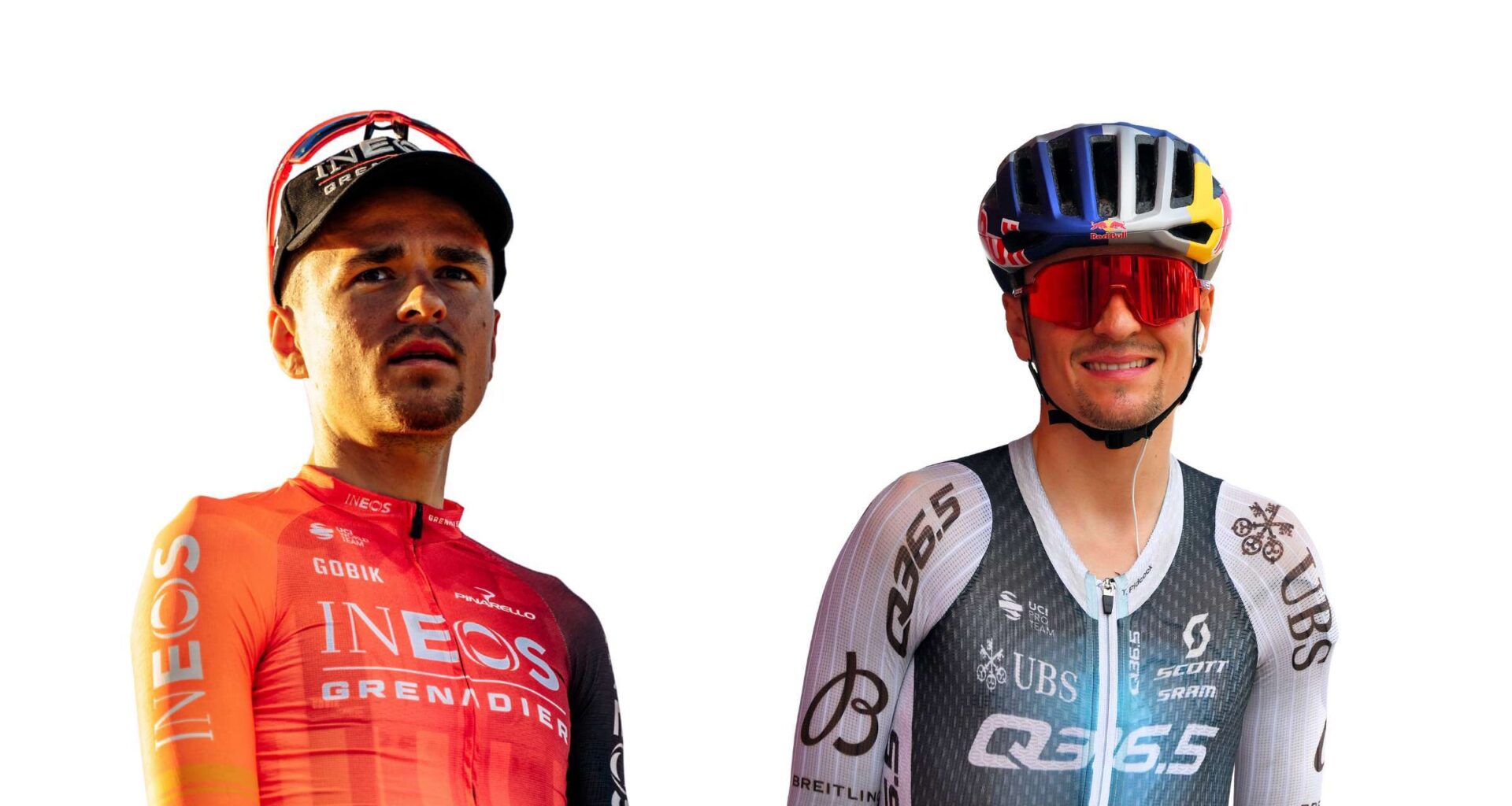Published October 17, 2025 12:44PM
When Tom Pidcock was unceremoniously dropped from the Ineos Grenadiers roster just days ahead of last year’s Il Lombardia, it was the final shot of a drama that had been on a slow burn for months.
Within weeks, the tension boiled into public view. Pidcock was gone to Q36.5 Pro Cycling, and Ineos had cut loose Britain’s brighting young star in one of cycling’s most acrimonious and bewildering breakups.
Fast-forward one year, and the question still lingers: who came out ahead in the season’s most controversial transfer saga?
At first glance, Pidcock and Q36.5 are the big winners.
In 2025, the 26-year-old checked off nearly all the boxes on his pre-season wishlist. And Q36.5 punched way above its weight to earn only cycling’s third wild-card podium in 25 years with third at the Vuelta a España.
Ineos — whose management insisted that Pidcock no longer fit into its vision — plodded through another muddled season, with only Thymen Arensman delivering salvation in the form of two stage wins at the Tour de France.
But there’s new energy at the once-mighty UK super team, and no one seems to be missing Pidcock inside the Ineos bus.
Now, one year later, it’s time to unpack one of the juiciest transfer stories in recent memory: what went wrong, how it unraveled, and who came out on top.
Bound to Break: Why the Ineos-Pidcock deal was doomed
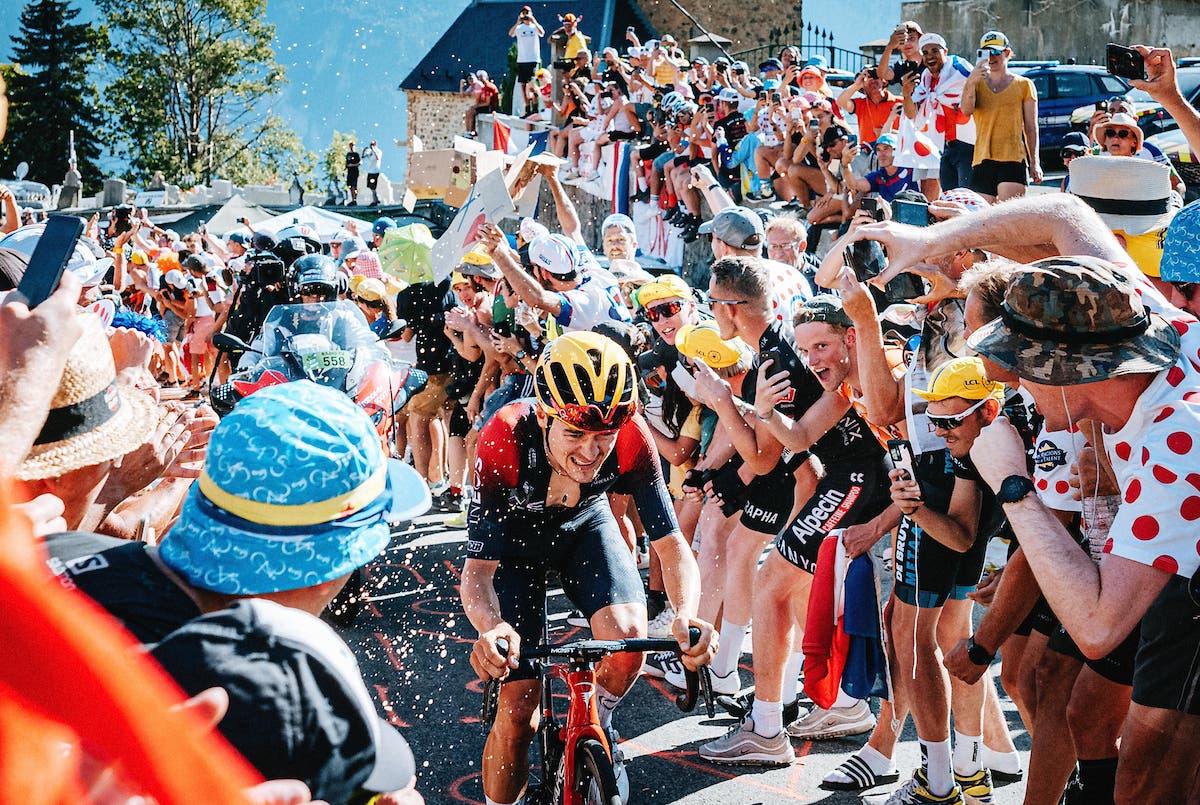 Expectations were sky high after Pidcock won on Alpe d’Huez in his 2022 Tour de France debut. (Photo: Gruber Images/Velo)
Expectations were sky high after Pidcock won on Alpe d’Huez in his 2022 Tour de France debut. (Photo: Gruber Images/Velo)
By late 2024, it was obvious that the relationship between the Britain’s flagship team and the nation’s biggest rising star had turned toxic.
After his breakout 2022 Tour debut that included his emotional stage win at Alpe d’Huez — with his descending skills going viral — Ineos signed the budding star to a five-year contract through 2027.
Pidcock seemed destined to be Ineos’s next British generational star.
So what went wrong?
Insiders grumbled that Pidcock was not a team player, and after a patchy 2023 campaign, reports filtered out that he stubbornly refused to work for teammates during the Tour.
Pidcock believed he should be the outright leader, but Ineos had other designs with its deep fleet of talent, especially at the 2024 Tour with Carlos Rodríguez.
“Why did it end the way it did? There wasn’t a specific moment; it was gradual,” Pidcock said at the start of the season. “I think things were just not going how it was originally envisaged at Ineos, how I imagined it, and the mutual solution to end the contract was the best.”
Pidcock — who put the Olympic gold medal defense in Paris at the center of his season to the chagrin of the team’s road ambitions — also bristled under new management after Sky-era stalwarts Dave Brailsford and Rod Ellingworth moved on.
Instead, the sweetheart deal was ripped up, and Pidcock made the stunning decision to join second-tier Q36.5 Pro Cycling.
Both sides had reached the breaking point, and Ineos did not put up any road blocks to stop Pidcock’s departure.
“We’re really proud of the work we’ve done with Tom to help him achieve some extraordinary and memorable moments,” CEO John Allert said diplomatically. “Tom has some big multi-disciplinary goals and we believe this decision enables both of us to pursue our future ambitions with clarity.”
That’s corporate-speak for a very messy divorce.
So who’s to blame? It was a mix of money, ego, ambitions, and incompatible directions.
To a certain degree, both sides lost something. Ineos gave up the most dynamic British rider in a generation. Pidcock turned his back on the support of a big-budget legacy team that knows how to win big races.
The upside is that both parties could walk away from the intolerable mess and hit the reset button.
‘Off the leash’: Why Q36.5 came out on top
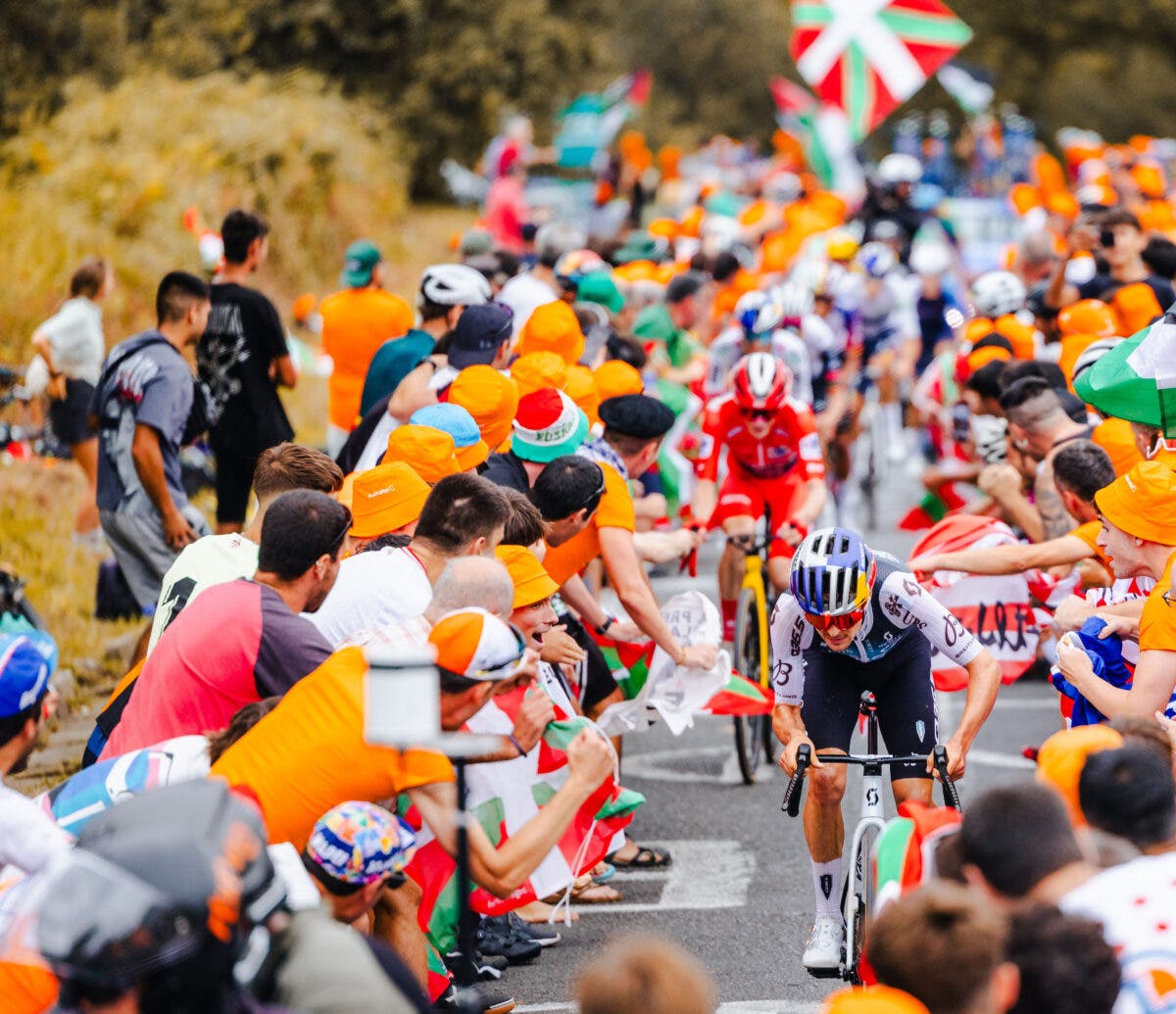 Pidcock stunned the doubters by hitting third at the Vuelta a España. (Photo: Chris Auld/Velo)
Pidcock stunned the doubters by hitting third at the Vuelta a España. (Photo: Chris Auld/Velo)
Many rolled their eyes when Q36.5 emerged as Pidcock’s choice. There was no guarantee to race the Tour de France, and no real record of success.
For a rider of Pidcock’s stature, it looked like a step backward.
Was that the best he could do?
Coming out of 2024, the reborn ProTour-level team had yet to race a grand tour and had not made much of an impact, with only 12 relatively minor wins in its first two years.
Pidcock found what he was looking for as he immediately became the gravitational center of the team. He brought in a phalanx of coaches and staff with him, and even his younger brother, Joe.
“From my heart, from the first meeting, I decided I was coming here,” Pidcock said. “My head was debating for a long time, but the thing about here is the belief in me — that shared vision of success and freedom and being able to race my bike. I feel like I’m off the leash.”
Proudly racing with its underdog badge, Q36.5 quickly proved the doubters wrong.
Pidcock’s longtime coach Kurt Bogaerts rattled off Pidcock’s to-do list for 2025. Defying the odd-makers, Pidcock and Co. pretty much hit every one.
First GC win: Check, with the Saudi Tour in February.
A monument podium: A miss, with sixth at Il Lombardia his best, but he was second to Tadej Pogačar at the nearly monument at Strade Bianche.
A grand tour stage win: Also a miss, but twice second in stages at the Vuelta a España and once third at the Giro d’Italia.
A grand tour podium: A big check, with Pidcock stunning everyone to finish third at the Vuelta.
Q36.5 finished the season over the moon with arguably what’s the best and most effective transfer in a decade.
Pidcock’s arrival proved that one rider in the right deal can transform an entire team.
The team — backed by billionaire investor Ivan Glasenberg — is bringing on even more firepower as the squad aims for the Tour de France in 2026.
Pidcock now has the support and renewed self-confidence to squeeze the maximum out of himself that he claims he could never have had at Ineos.
Why Ineos might be stronger without its rebel
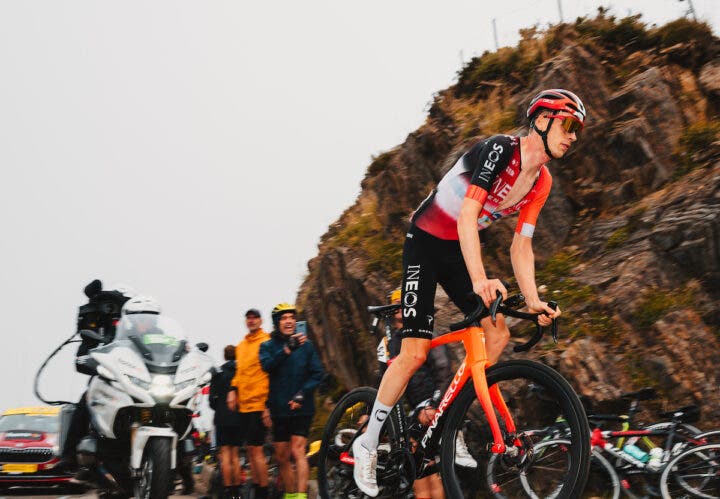 Double stage wins by Arensman helped save the Tour for Ineos. (Photo: Gruber Images/Velo)
Double stage wins by Arensman helped save the Tour for Ineos. (Photo: Gruber Images/Velo)
The Pidcock-Ineos divorce reveals how deep the mutual disdain was running between the cross-discipline star and the once-mighty British super team.
When Pidcock walked out the door, Ineos didn’t ask for compensation or a buyout. The feeling inside the bus was that everyone was relieved it was over.
Although this year didn’t produce any grand tour podiums for Ineos, Pidcock’s departure gives the team room to find its next big star without having never-ending drama.
Ineos circa 2025 still packs that institutional DNA that made them King of the Tour a decade ago, and team brass simply didn’t believe that Pidcock was the rider to lead them back to the promised land.
With Brailsford edging back into the frame, things are accelerating at Ineos. Rising French talent Kévin Vauquelin is the first big bet in the post-Geraint Thomas era and more is coming.
Many look at Ineos and wonder why it’s missing the biggest names on the transfer market. Ineos stepped aside in the Remco Evenepoel sweepstakes because the Belgian was ultimately deemed too expensive, and riders like Primož Roglič and Simon Yates were not interested in Ineos.
By not doubling down on Pidcock or trying to force the issue, Ineos decided to cut its losses.
While that might produce short-term pain — especially in light of Pidcock’s surprising third at the Vuelta — the team now has an open road to find that rider who can right the once-mighty ship without the drama.
One year later: A clear winner
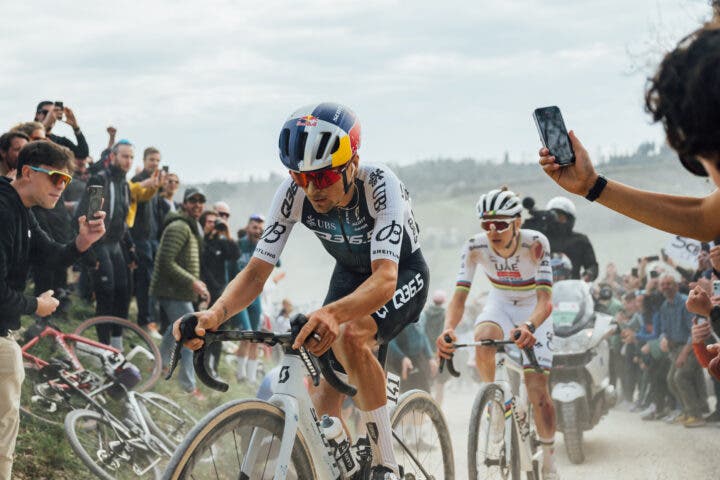 Pidcock held tough with Pogačar to finish second at Strade Bianche. (Photo: Chris Auld/Velo)
Pidcock held tough with Pogačar to finish second at Strade Bianche. (Photo: Chris Auld/Velo)
So 12 months after last year’s Il Lombardia earthquake, where do things stand after the sport’s most acrimonious split?
By every objective metric, Pidcock and Q36.5 came out the big winners after the breakup.
The two-time Olympic mountain bike gold medalist proved he can win a GC title on pavement and confirmed he’s a legitimate grand tour contender with third at the Vuelta.
Pidcock will bound into 2026 with renewed confidence and an even stronger team, with eyes on a triumphant return to the Tour de France.
Big question marks remain about what’s happening at Ineos.
Though teams like UAE Emirates-XRG are out-spending them, Ineos’s recent grand tour dry spell isn’t for a lack of budget, because it remains among the top 5 in WorldTour team budgets.
The recently retired Thomas proudly carried team colors into his late 30s, most recently with third in the 2022 Tour, but the team’s string of high-profile recruits failed to deliver a front-line yellow jersey contender to challenge Pogačar or Jonas Vingegaard.
Ineos remains a force. It won stages in all three grand tours in 2025 among its 27 wins, and ends the rolling three-year WorldTour rankings in fifth.
Was Pidcock difficult to manage? Possibly. But the team was happy to shed a rider who in their view was producing more tension than results.
Ineos will better hope its bet on Vauquelin can pay off quickly, or the team might realize too late that the rider they pushed away was the one who could have led them back to glory.

